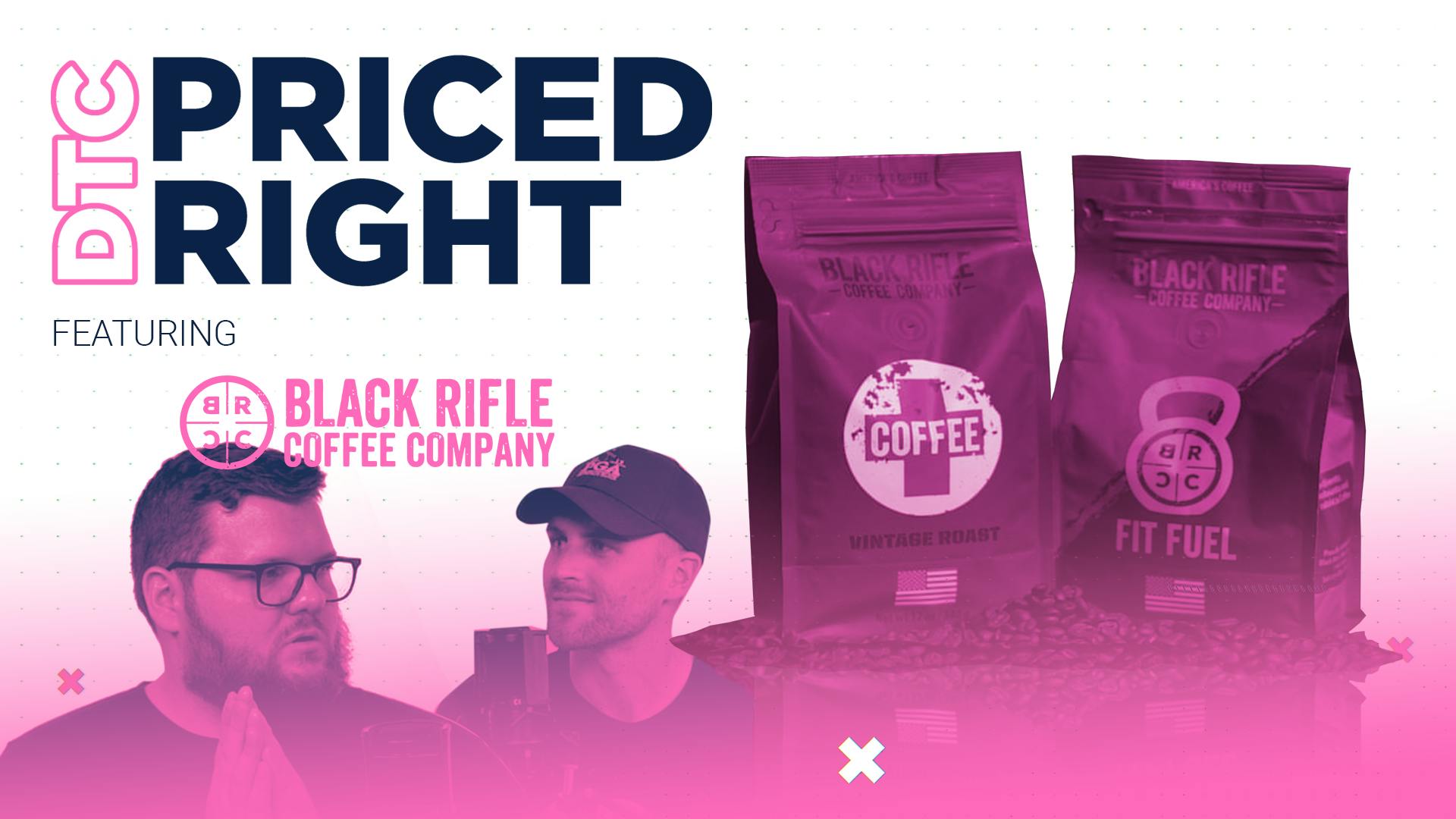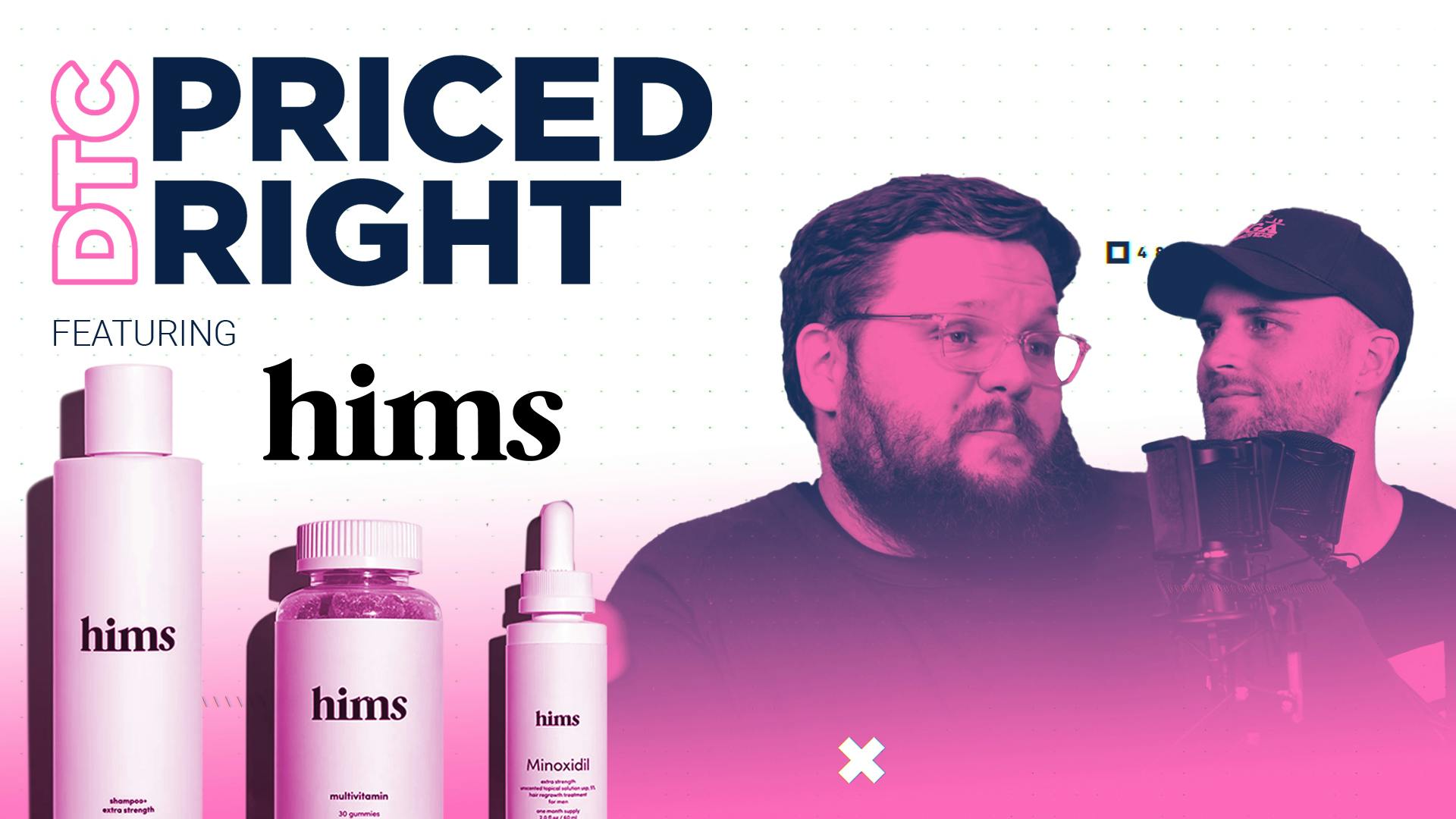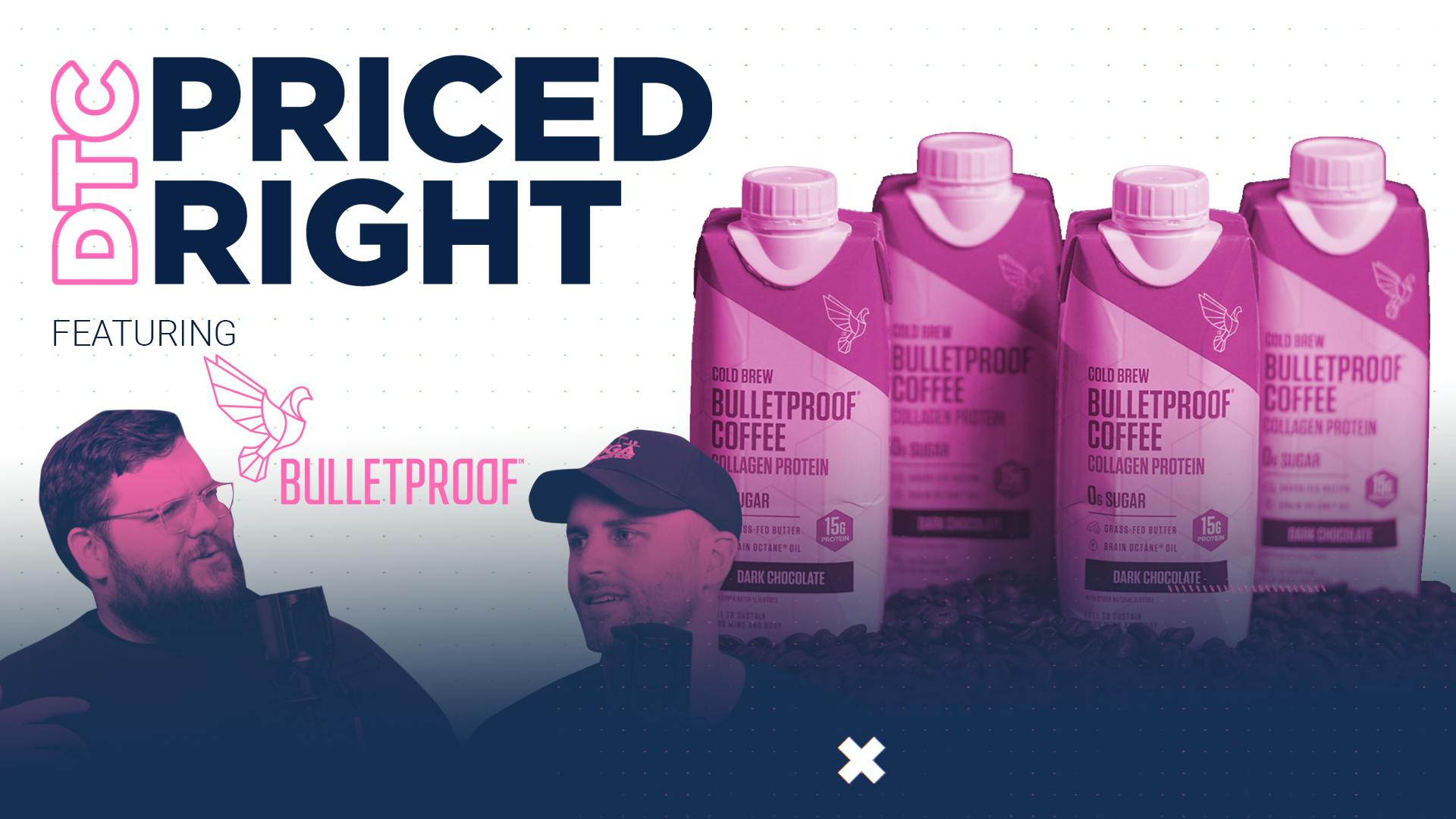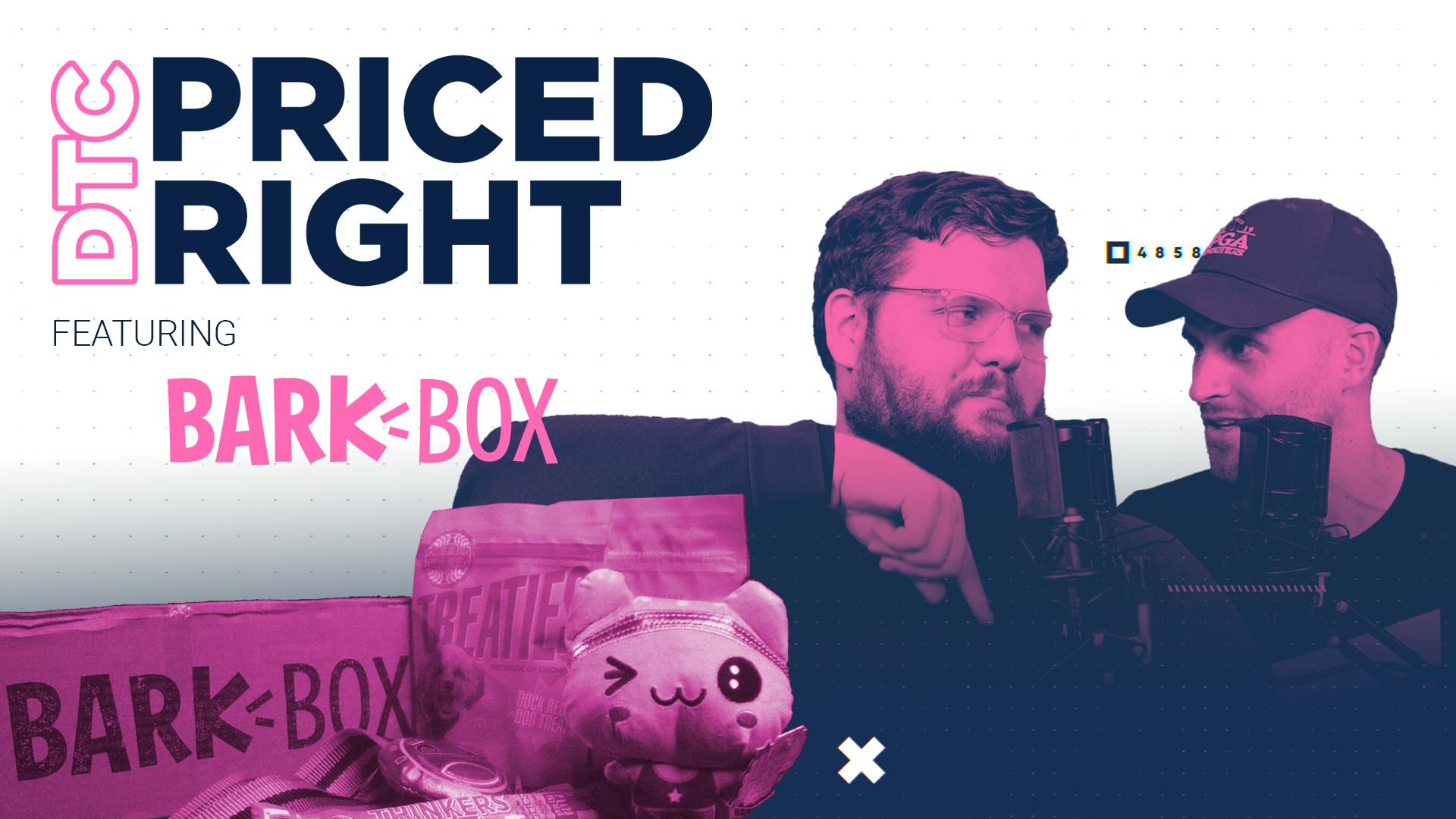
Is Huel's pricing strategy shakin'?
This episode might reference ProfitWell and ProfitWell Recur, which following the acquisition by Paddle is now Paddle Studios. Some information may be out of date.
Please message us at studios@paddle.com if you have any questions or comments!
This week we're going into the world of meal replacement. We're looking at Huel—what they're doing well with their pricing, as well as what they're doing not so well, and the things they could improve. We wrap all of that information into a nice little case study, so you can improve your monetization strategy and get your pricing right.
Huel's focus on quality and branding has sold more than 100 million meals in over 100 countries. But is Huel's pricing strategy enough to take on the competitive supplement space?
Below are some valuable takeaways you can use for your own business.
- Know which value proposition drives the value.
Huel is losing out by generalizing their value proposition.
It's crucial to understand early on what your value prop is for a particular user.
Collect data in some form.
Tailor content around your value proposition. - Localization is key in such a wide market with consumer products.
Know the willingness to pay in different regions.
Huel is missing some key price points—they need to change this and take advantage of the differences in willingness to pay.
Make it easy for customers. Simply ensuring customers see prices in their local currency goes a long way. - Optimize social proof for depth to boost value.
Use case studies as well as social proof to your advantage.
Align these case studies with the value props that have a higher willingness to pay.
The food pyramid is bullshit. We hate to be the ones to break it to you, but study after study after study shows us that the food pyramid gets a lot wrong with nutrition. For instance, did you know fat is actually good for you and sugar is basically akin to poison at this point? Yea, turns out we don’t really know a lot about nutrition, even though food is the center of our lives and culture. We’ve never had more options for our daily caloric intake, but somehow we’re still malnourished of certain nutrients and vitamins. Turns out getting the right, balanced diet is pretty difficult.
The confusion and lack of convenience led to Julian Hearn founding Huel in 2015 to provide ready to eat meals that were perfectly balanced of vitamins, minerals, and calorie types. Hearn discovered just how complicated nutrition was when he dropped from 21% bodyfat to 11% by carefully weighing, cooking, and planning every meal. His friends couldn’t replicate his success, because it was too much work, so he launched Huel to fill the void.
Huel's success
Products like Slimfast and Ensure have been around for quite some time though, so Huel is taking on this multi-billion dollar market through two main success factors:
First, Huel expanded their market by focusing on the health conscious. Competitors in the space focused on weight loss, Huel chose to focus on lifestyle. While Huel can help you lose weight by ensuring you don’t overeat, this isn’t their main focus. Instead, they’re focused on the convenience and cost saving of getting the proper type of calories you need. It’s an important distinction, because weight loss fads come and go, but nutrition is forever. In turn, Huel’s customers stick around into the long term, thereby juicing Huel’s revenue and retention performance.
This long view leads to the second success factor—Huel’s developed their brand for the long term. Huel optimizes every touch point—the product, the look and feel of it, the way they speak to customers, the delivery box, emails, ads, just everything has the long-term vision of nutrition in mind. You won’t see “lose 20 pounds in four days” marketing here, because it’s about the quality and revolution of nutrition. Throw in some simple swag that signals you’re a Hueligan and you have a recipe for long-term growth.
All of this comes out in Huel’s quality, too—full of nutritionally complete food. They’ve developed the recipes over time, but they’re made of an ultra fine blend of oats, rice, peas, coconuts, and a balance of 27 essential micronutrients. All the fuel your body needs.
The focus on quality and brand has led to selling over 100 million meals in over 100 countries and as Huel looks to expand internationally, they’re showing no signs of slowing down, especially with thousands and thousands of positive reviews.
The Huel dining experience
How important is texture and experience to your general eating? Me, I like eating. I like to eat. I enjoy the act of eating. It's fun for me. But Huel, they're very focused on "not every meal." So Hueligans can enjoy eating a solid meal whenever they like. There are certainly people that do focus on every meal replacement with Huel. I know we have some in the office who are with Soylent. Sorry, Huel.
And I think it's one of those things that's fascinating because there are supplement people. There are every-single-meal people, and then there are people who never in their right mind would do this unless they're on some Mars rocket ship where Elon Musk is forcing them to only eat pills.
I think what Huel has tapped into is health and wellness, which I think is important. The American diet and many diets in developed nations around the world are terrible. In addition to that, there are money and cost-saving elements to this. Huel—even though it's expensive to buy monthly—if you're using it as a meal replacement it's relatively inexpensive.
There's also a social element. Huel can make it cheap to feed folks who can't afford food in developing nations, in all these different places. And I think what Huel has tapped into is all these different factors. That's very hard to do as a brand.
The convenience factor
Then, that last piece is convenience. Consider the people who eat it in the office or the ones that don't want to go out and get lunch. They don't want a break, or they don't have time, or perhaps they don't want to take the time to prepare a healthy meal.
That's what I like about these.
And that's why I've used this at certain times. I'm not the epitome of health, but I try. And I've used this at times because I'd ask myself, "Why am I ordering Chipotle every day?" I know it's not terrible for you, but it's not great for you.
Now, let's get into the pricing page and look at what Huel is doing really well with product pricing and what they're doing not so well.
Huel's pricing page
The element of choice
First up: give customers the element of choice when you have fragmented tastes or multiple uses. You can customize your subscription and package offering that way. This is super important when you have a bunch of different types of consumers like Huel does.
People have different tastes. They want different flavors in their milkshake. Huel makes it easy for people to customize their bundle accordingly. I've found this is crucial if you're in the food space, supplement space, or any business where you have a user that's bought into your overall mission.
But there's more. There will be a bunch of fragmented tastes beyond that. You know, I might like this chocolate, but you might not. You might like the berry, vanilla, or unflavored. Maybe you want to cut it with a custom flavor you prefer. And that's a powerful notion: you want to offer those packaging options that your customer craves.
The other thing I think they do really well is the minute you hit the subscribe button at Huel, they provide an add-to-cart phenomenon with a bunch of different products. Now, in my opinion, there's a lot of products on here, probably too many. But add-ons are always a gateway to other subscriptions and other uses.

Cross-sell for the win
Imagining myself as a customer, I might be trying to buy the powder. Then, I'm looking at this prompt and wondering, "Oh, what is this flavor boost taster pack? What is this Huel ready to drink? What are these Huel bars? I didn't even know they had all this!"
I'm already a customer for the powder, but I'll add one of these ready-to-drinks. Add that to my cart, add it to my subscription. And I think "I like this. I'm going to change my subscription to this higher price plan." Or perhaps I decide to add this subscription to the powder subscription or add it to the other subscription I have for my family.

This is a vital point, not only for average cart value or average order value but in addition to those things. The goal is to boost that subscription and that relationship over time. It's like a digital version of register placement, putting all those things around the register to upsell and cross-sell.
The only thing I don't really like about Huel's add-to-cart is the number of choices. Some other brands are very choosy about add-ons. You could probably simplify this. I'm sure Huel's testing this until the cows come home. But there's a lot of options here. And that might be causing analysis paralysis, a little too much dissonance for the customer.
When I was working at the DTC company, I was a part of Jim Vara, which was the customization of jewelry. We found that putting in fewer options was more beneficial than putting in more choices. Too much choice becomes overwhelming for folks. Too many people just clicked out, rather than adding it to the cart or moving forward with the purchase.
Let's take a look at the data.
Data and analysis
Customers learn which value propositions drive willingness to pay and value.
This is crucial, especially when you're operating a business with a repeat client base of super fans plus new customers, like Huel and their competitors. We collected data from their current customers and their prospective customers, and we thought of a generic way to describe Huel. Then we overlay it with the value proposition that people care most about: things like saving money, nutrition, all these things. It's fascinating how much this changes the willingness-to-pay of various prospects and current customers.
Other details like:
- Zero food waste
- Humane
- Simple ingredients
- Time saving
- Complete nutrition
All of those key points can boost a customer's willingness to pay more. In this particular market, customers are buying the product for a specific reason. There's a reason they're getting this food versus ordering takeout. And if you can combine the best of both worlds, convenience and completeness, suddenly you're looking at some compounding value when it comes to willingness to pay.

Operators out there—especially in the DTC environment—you must ensure that you understand what drives the willingness to pay. But you should be collecting that information in some particular manner, whether it's through a dropdown for a newsletter or asking for it in the checkout flow. Then you can decide how to hit them next, in terms of an email or different marketing campaign. Even personalized landing pages based on their interests can boost that willingness to pay.
Localization is key in such a wide market with consumer products.
This is something we talk about all the time with DTC operators. It's important because you need to figure out the willingness to pay is in different regions. Also, you need to make sure that it's easy for customers in different regions to understand what they're paying for, and why they should purchase your product.
With Huel, I saw willingness-to-pay trends generally in line with what I've seen in the past. You'll see a higher willingness to pay in the UK, Western Europe, and the Nordics, of course. It's kind of like the cost of living and standard of living.
Huel does do a good job changing up currency symbols, making sure there are different functionalities when it comes to their location.
One of their big competitors—Soylent—Doesn't do a great job with this. They send their UK customers to an Amazon link. And that Amazon link, I don't know if it was just for me, but I tried it with a couple of different accounts. It doesn't even go to a Soylent-specific website, which is interesting. In contrast, Huel has built out a bunch of other pages for different regions.
Where Huel misses the mark—noticeably, and you can see this in the data—is when it comes to price points.

Their localization is cheaper in the UK than in the US. And I'm sure they have reasons for this. But when we look at the data, the UK is generally willing to pay about 15% or 20% more than the US market. We see a reverse structure there. I'm sure there's some reason for it, but if I were Huel, I'd look into it immediately. You can contact us. We're more than happy to talk through this and share some data.
The other thing is the product price in France. It's close to US prices. And here again, there's about a 20% boost in Western Europe: France, Germany, Spain, etc. Long story short, change this, so you can take advantage of those differences and that willingness to pay. It looks like Huel already has the infrastructure in place to take care of these things.
Optimize social proof for depth to boost value.
The thing you must keep in mind when you're looking at a somewhat new product is this: there's a little barrier to get customers into it.
Customers ask: "Do I want to do this?" It's a consideration stage. Huel isn't the SlimFast you remember if you're older. If you're younger, maybe you're used to these products now.
You do want to use case studies as well as social proof to your advantage. And the thing I found with Huel is that they have outstanding reviews. But they could push this further with actual case studies about individual users. They have some of these on their website. I just think they could amp it up.
We tried a positioning exercise where we described different products in a few different spaces, particularly within the DTC market. We took the same products, the same descriptions, and added different types of social proof.
Here on the far left, you're seeing a customer ribbon. This is just a ribbon of reviews. Then you see a testimonial quote. Then a mini case study, which might be a little half or quarter page of "before and after" or "this is what happened." And then all of a sudden, we see a full case study. You'll notice a boost in willingness to pay.

Things like customer ribbons are table stakes.They're not moving the needle that much in DTC because people are jaded when it comes to reviews. People want social proof, but they don't trust it too much. But using mini case studies, as well as more significant case studies, you can illustrate, "This is how I've changed my life. This is how I've saved money."
Putting those front and center in the checkout flow could increase that willingness to pay, or at least get people over the ledge to make that acquisition for the first time. This is a big thing that Huel should do. They're getting a lot of word-of-mouth marketing already. But reinforcing it on their website is vital.
And for your company and your operations, just make sure you're doing more than the little review ribbons. Take it to the next level. If you align these case studies with the value props that have a higher willingness to pay, that would be better.
Recap:
- You need to know which value proposition drives the value.
Huel could do better here. They generalize their value props, or they throw everything into the page with no curation. And if you can understand early on what your value prop is for a particular user—meaning you're asking them in some sort of flow and then tailoring the content you send them—it will boost that willingness to pay. - Localization is key in such a wide market with consumer products.
Huel's doing a much better job than some of their competitors and many folks in DTC. You don't see enough localization at all. There are a few specific instances where Huel has lower price points in regions with a higher willingness to pay. There are some quick fixes that Huel could take advantage of. - Optimize social proof for depth, to boost value.
Go beyond the review ribbon. Huel could do more mini case studies associated with those value propositions that are high value. Because people want to see themselves in other people to have the inspiration, right?
I don't think Huel is a weight loss solution. I think early on, people were comparing it to SlimFast and those products. But, when customers see a case study that says, "Oh, I got fit with this," it becomes appealing. Or the whole saving money pitch, or a time-saving nutrition pitch are ideal focal points for Huel.







